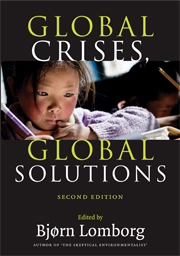Conclusion
Published online by Cambridge University Press: 05 June 2012
Summary
This book represents the end of two years of work, since we last started approaching the experts who fill these chapters and asked them to identify the best ways to solve the world's biggest problems.
They have provided us with the ultimate overview of how global decision makers can best put their money to use when they intend to improve the state of the world. The next part is up to you, the reader. Which of these projects do you think deserves attention first? Where do you think additional money should be spent? Where will you donate your money?
Prioritization is hard. It is much easier to say that we want to do everything. It's much easier to say that every global problem is important and we should solve them all, right now.
It is important not just to talk about what is the best thing to do right now, but also to acknowledge that some things should not be our top priority.
When the expert panel of economists made their findings in Copenhagen in 2008, they ranked lowest the proposal of combating climate change policies with mitigation only. The benefits of mitigation alone would be lower than the costs. Spending a dollar would get back less than a dollar worth of good.
Similarly, solutions to the problem of outdoor pollution have very low cost–benefit ratios when seen in a developing nation context because they are so expensive.
- Type
- Chapter
- Information
- Global Crises, Global SolutionsCosts and Benefits, pp. 680 - 681Publisher: Cambridge University PressPrint publication year: 2009

